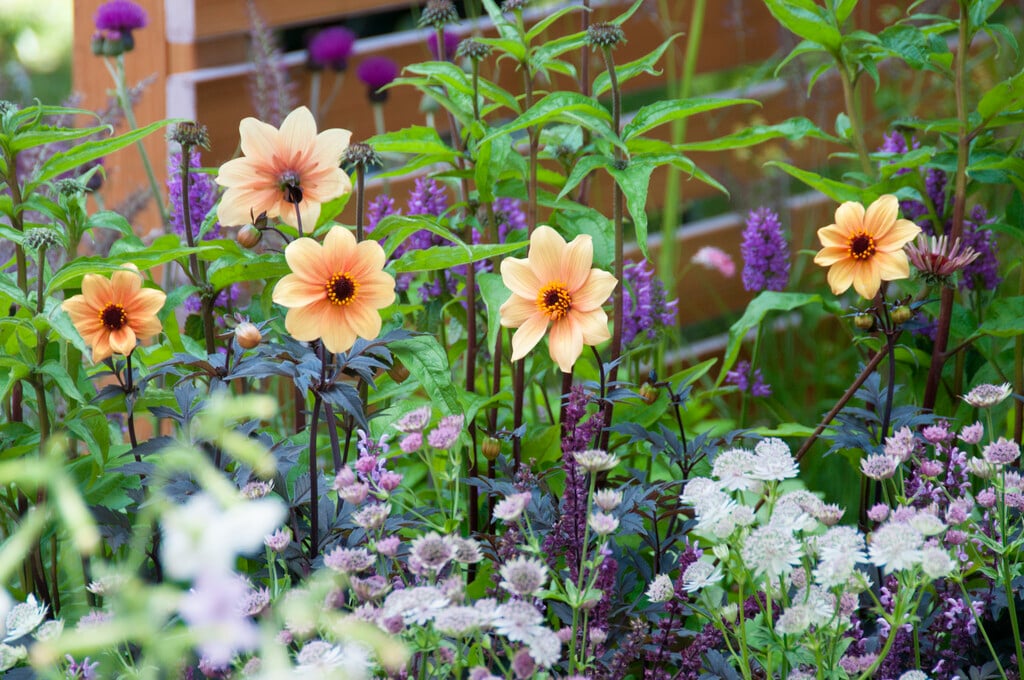Dahlia 'Dark Side of the Sun'PBR (Sin)
dahlia 'Dark Side of the Sun'
A tuberous-rooted perennial to about 75cm, with very dark bronze, almost black, foliage, blooming from mid-summer until the first frosts. Single flowers have broad, rounded, pinkish-orange petals shading to yellow at the base, with a dark brown central disc opening to dark yellow

Buy this plant
Size
Ultimate height
0.5–1 metresTime to ultimate height
1 yearUltimate spread
0.5–1 metresGrowing conditions
Moisture
Moist but well–drainedpH
Acid, Alkaline, NeutralColour & scent
| Stem | Flower | Foliage | Fruit | |
| Spring | Black Bronze | |||
|---|---|---|---|---|
| Summer | Orange Yellow | Black Bronze | ||
| Autumn | Orange Yellow | Black Bronze | ||
| Winter |
Position
- Full sun
Aspect
South–facing or West–facing
Exposure
Sheltered Hardiness
H3Botanical details
- Family
- Asteraceae
- Native to GB / Ireland
- No
- Foliage
- Deciduous
- Habit
- Clump forming
- Genus
Dahlia are tuberous rooted perennials with pinnately divided leaves and showy flowerheads, double in many cultivars, in summer and autumn
- Name status
Accepted
- Horticultural Group
- Single-flowered dahlias have flowerheads usually less than 10cm across, with one or two rows of spreading ray florets, surrounding a central boss of small tubular disc florets which are valuable for bees and butterflies
How to grow
Cultivation
Grow in full sun, in fertile, humus-rich, well-drained soil enriched with organic matter and general-purpose fertiliser. Pinch out growing tips to encourage bushy plants. Water freely in dry periods. Lift and store tubers in autumn to replant, or use as a source of cuttings, in spring. See dahlia cultivation and our video How to plant dahlia tubers and care tips
Propagation
Propagate by softwood cuttings taken in spring from shoots from stored tubers, or divide the tubers, ensuring each section has at least one viable bud
Suggested planting locations and garden types
- City and courtyard gardens
- Cottage and informal garden
- Patio and container plants
- Wildlife gardens
- Cut flowers
- Flower borders and beds
- Bedding
Pruning
Deadhead to prolong flowering. Cut back to near ground level in autumn, once frost has damaged foliage, before lifting and storing for the winter
Pests
May be susceptible to aphids, capsid bugs, caterpillars, earwigs nibbling flowers, glasshouse red spider mite and slugs
Diseases
May be susceptible to powdery mildews in dry conditions, fungal rots including grey moulds in wet conditions and in storage, and a virus that causes stunting, leaf markings and distortion
Get involved
The RHS is the UK’s gardening charity, helping people and plants to grow - nurturing a healthier, happier world, one person and one plant at a time.